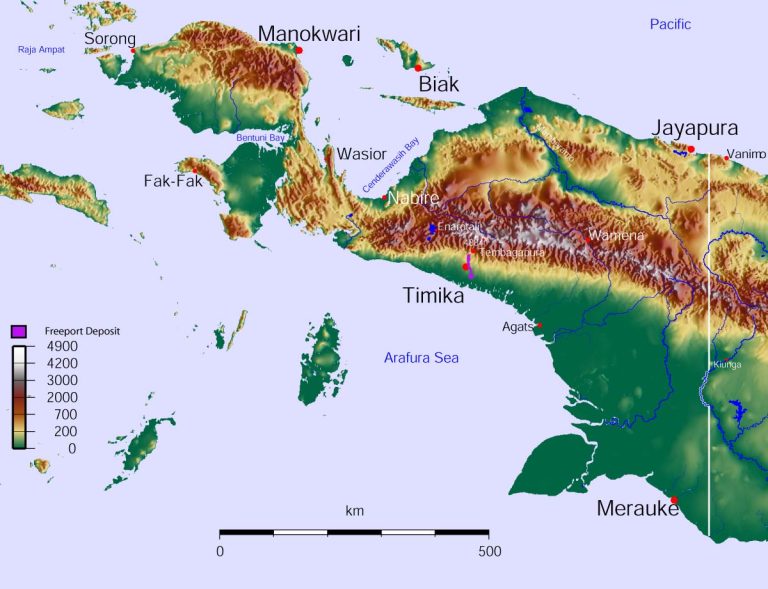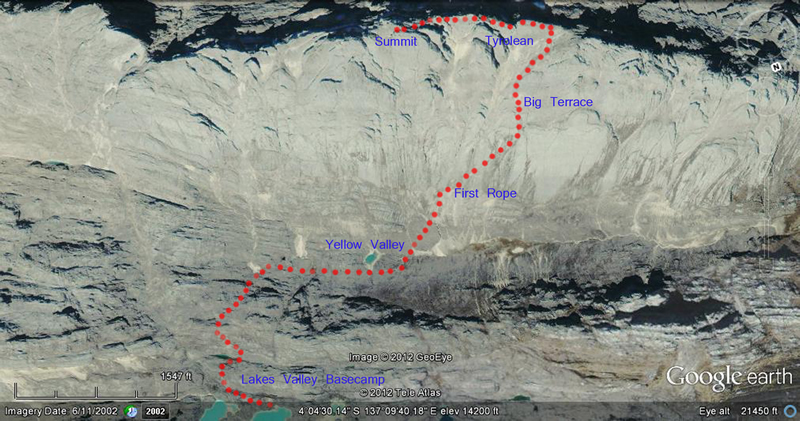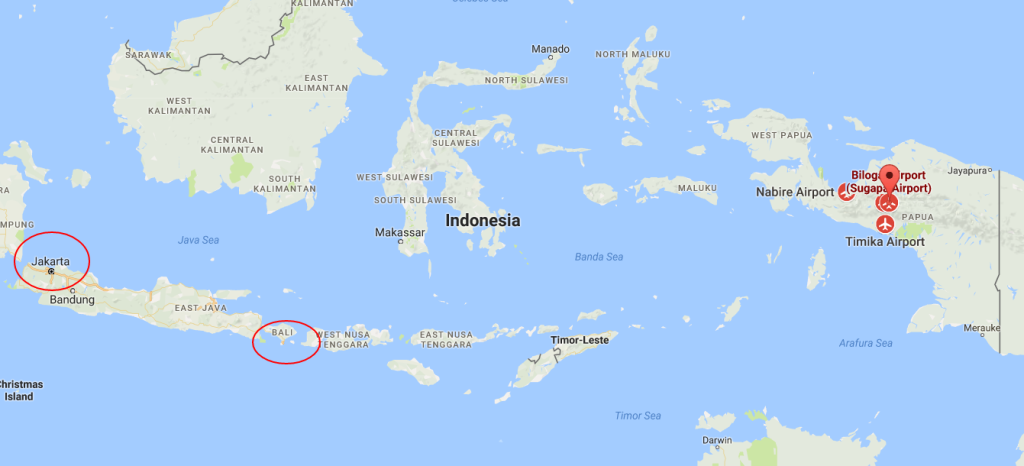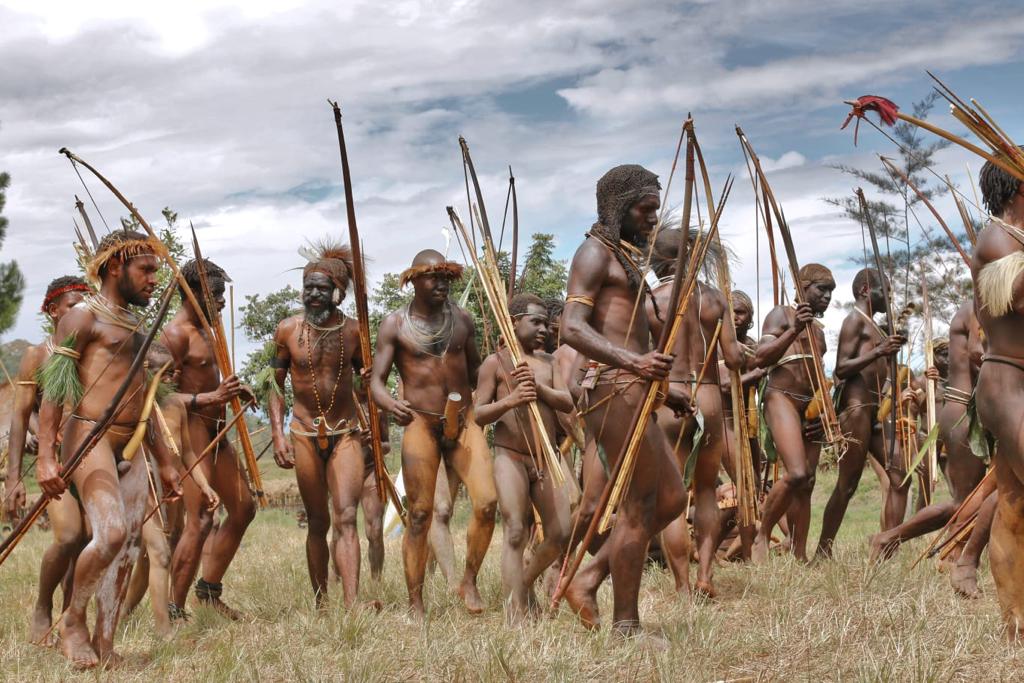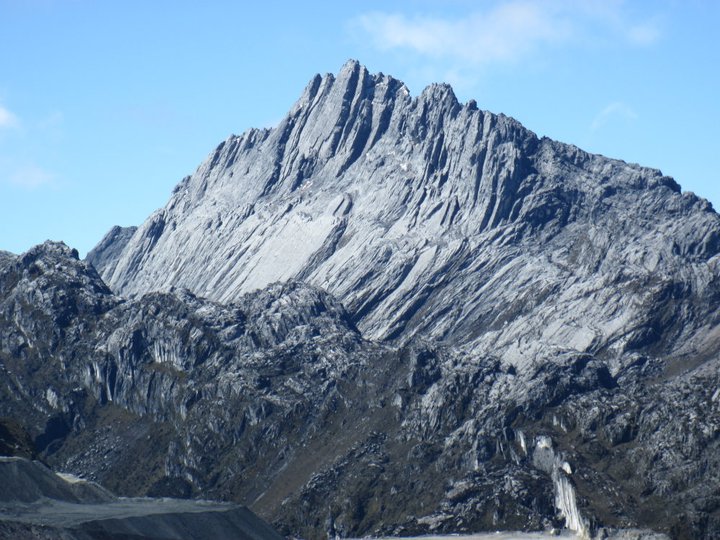
Climb Puncak Jaya, 4884m (Carstensz Pyramid) Papua New Guinea
Carstensz Pyramid, now known as Puncak Jaya is one of the famous ‘Seven Summits’, the highest peak in Australasia situated on the island of Papua New Guinea. This peak is the only of the Seven which is a rock climbing peak and we now use helicopters to and from base camp as the trekking through the jungle to get to base camp is now considered too dangerous.
The climb itself is wonderful, very exciting and dramatic, and certainly a worthy Seven Summits expedition, including the famous Tyrolean traverse along the high altitude ridge which has now been fixed. It’s remote and other-worldly and happens to overlook the largest goldmine in the world which is somewhat surreal to look down on from the summit.
Introduction to Puncak Jaya (Carstenz Pyramid)
The peak is in West Papua, previously known as Irian Jaya until 2005, and is situated in central New Guinea, which is the second largest island in the world. It is in a remote region which has been beset with a history of political instability. We are fortunate to work with a local outfit and team of guides who have been organising trips to the mountain for many years and are able to give us clear advice on the local situation. Flights are into and out of Timika.
Relatively few people have climbed Puncak Jaya, even compared to Mount Everest and Vinson, partly due to the fact that it is often closed for long periods of time. The trek through the jungle was notorious for its difficult conditions and also the likelihood of meeting armed people enroute. The helicopter journey is still often beset with delays (mainly due to supply of jet fuel), but it is now the most feasible way into the base camp.
Conditions on the mountain are diverse and often challenging; it’s common to be climbing in rain and on very wet rock and then snow. There are fixed lines to clip onto and the anchors are good but in some of the steep gullies lower down there is loose rock so a helmet is vital. The rock itself is good for climbing but very sharp so bring several pairs of gloves. The standard northern Harrer route is the most popular and some short sections would grade at 5.8 (see the full description below).
Since 2024 the Government has stipulated that a police security detail be stationed at base camp for all teams which means that all the local operators are sharing facilities as much as possible to spread that cost. Teams will travel together to the base camp but then climb as independent groups.
Video of the Tyrolean Traverse
This video is courtesy of American mountaineering blogger Alan Arnette and shows clearly the famous section of the route which is now fixed.
CARSTENZ PYRAMID/PUNCAK JAYA ITINERARY
Helicopter trip programme
The itinerary is a guide only and is a minimum number of days based on arrival and departure from Timika. It is necessary to allow extra days for travel, flexibility in case of delays to the departure to base camp. International flights are normally into Jakarta or Bali, with onward flights booked to Timika from where we organise the helicopter to base camp. If you allow some extra time and end up not using it, then a nice additional excursion is to head back to Jayapura and go diving around the Raja Ampat islands.
| Day` | Programme |
| 1 | Arrival Timika and stay in a local hotel |
| 2 | Rest day Timika, preparation, acclimatisation |
| 3 | Helicopter to Carstenz Base Camp |
| 4-6 | Climbing days |
| 7 | Helicopter back to Timika |
| 8 | Timika departure |


